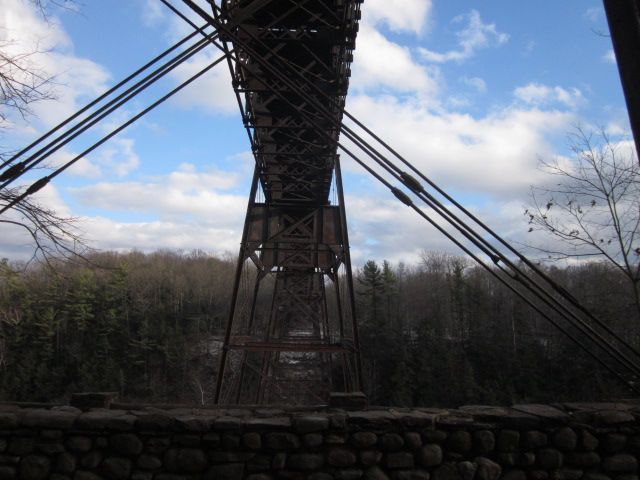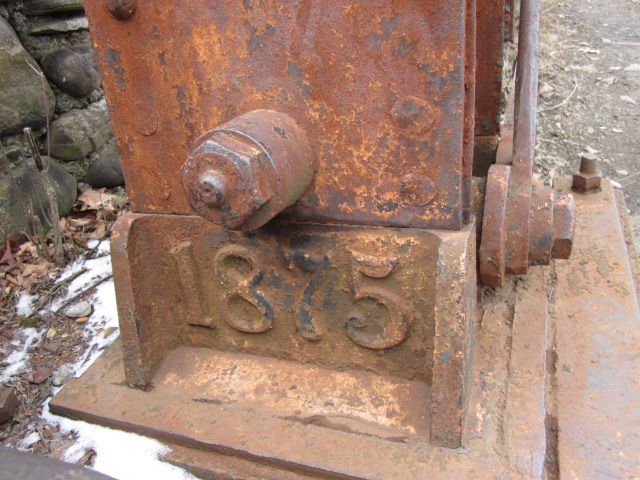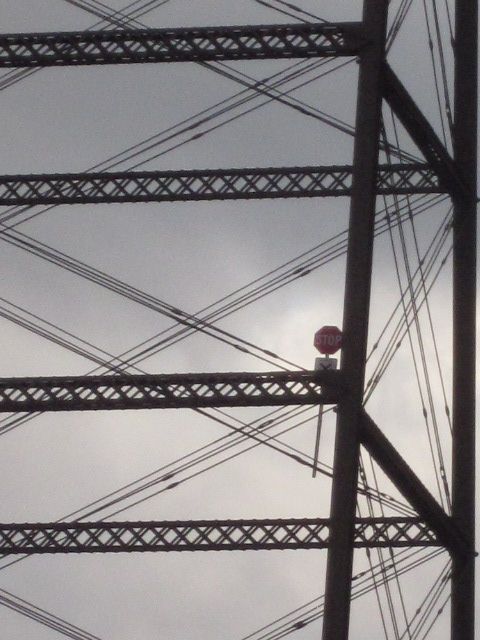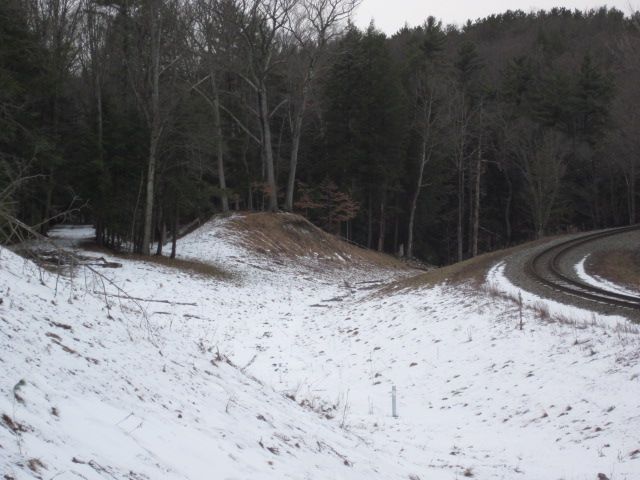by SST
Here are some photo's and 2 links while I visited the area today. No trains over the bridge although I kept looking.
This first picture is while I passed underneath the bridge. The visitor center said to expect icy roads but they were well salted and mostly dry. No problems. Good to see the bridge still standing.

I noticed today that 1875 is at the base of each leg of each tower. They looked in good shape. I do remember at least 10 years ago or so, when my friend and I explored the other side along the PRR/canal. I seem to remember that the base of 1 or 2 legs were not in that good of condition. I am going to explore that side come this summer.

While at the base of trail #1 and as I looked up at the bridge, I saw something on one of the legs half way up. Gee, that looks like a stop sign. It is, and I think it was taken from the east side of the trestle. Below the stop sign it says, "Private Railroad" or something close. I wonder who did it. NS repair crew or somebody else.

I think this has been discussed before and probably on the previous forum. I don't remember the outcome of the discussion. This picture shows the NS line on the west side of the river crossing and I think the original ROW on the far left of the picture enhanced by recent snowfall. Is this an original ROW? BTW I didn't jump the fence. There isn't any further up. I stayed on the snowmobile trail. {oh, am I allowed to say snowmobil on here?}

These two links are large pictures and I didn't want to spend the time to resize them.
In this picture, you can see the ex- PRR/canal/Greenway Trail on the other side. My friend and I started from Nunda and rode all the way in. The land slide area was not fun to cross. I may try from Portageville via snowshoe when the snow pack returns. Letchworth cabins are also along this trail just north of the NS line but before the land slide. I'm surprised another slide hasn't happened.
http://i1131.photobucket.com/albums/m55 ... 8e8421.jpg" onclick="window.open(this.href);return false;
This picture is just a large wide angle photo capturing the whole trestle.
http://i1131.photobucket.com/albums/m55 ... 6dfa94.jpg" onclick="window.open(this.href);return false;
This first picture is while I passed underneath the bridge. The visitor center said to expect icy roads but they were well salted and mostly dry. No problems. Good to see the bridge still standing.

I noticed today that 1875 is at the base of each leg of each tower. They looked in good shape. I do remember at least 10 years ago or so, when my friend and I explored the other side along the PRR/canal. I seem to remember that the base of 1 or 2 legs were not in that good of condition. I am going to explore that side come this summer.

While at the base of trail #1 and as I looked up at the bridge, I saw something on one of the legs half way up. Gee, that looks like a stop sign. It is, and I think it was taken from the east side of the trestle. Below the stop sign it says, "Private Railroad" or something close. I wonder who did it. NS repair crew or somebody else.

I think this has been discussed before and probably on the previous forum. I don't remember the outcome of the discussion. This picture shows the NS line on the west side of the river crossing and I think the original ROW on the far left of the picture enhanced by recent snowfall. Is this an original ROW? BTW I didn't jump the fence. There isn't any further up. I stayed on the snowmobile trail. {oh, am I allowed to say snowmobil on here?}

These two links are large pictures and I didn't want to spend the time to resize them.
In this picture, you can see the ex- PRR/canal/Greenway Trail on the other side. My friend and I started from Nunda and rode all the way in. The land slide area was not fun to cross. I may try from Portageville via snowshoe when the snow pack returns. Letchworth cabins are also along this trail just north of the NS line but before the land slide. I'm surprised another slide hasn't happened.
http://i1131.photobucket.com/albums/m55 ... 8e8421.jpg" onclick="window.open(this.href);return false;
This picture is just a large wide angle photo capturing the whole trestle.
http://i1131.photobucket.com/albums/m55 ... 6dfa94.jpg" onclick="window.open(this.href);return false;
